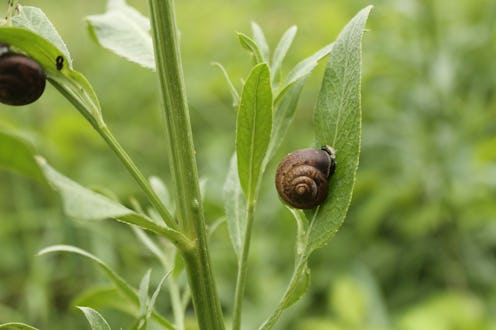Life
Rat Lungworm Infection Has Been Found In 8 States But Here’s Why You Shouldn’t Panic Just Yet

The Centers for Disease Control and Prevention (CDC) report that multiple illnesses involving a rare parasite were reported in 16 people between 2011 and 2017, and confirmed in 12. The parasite, called a rat lungworm infection, was found in eight states, including Alabama, Arizona, California, Colorado, New York, Tennessee, Texas, and Utah. Now, health officials are warning that the parasite may be more common in the United States than previously thought. According to NBC, rat lungworm doesn’t always cause severe symptoms, but when it does, the infections can penetrate the brain and lead to meningitis. USA Today reports that some rat lungworm infections may lead to comas or death. Because reactions to the parasite are often far less severe, it’s possible that additional cases have gone unreported, USA Today further notes.
Science News reports that while reactions to rat lungworm are often mild, severe cases can result in neurological problems. Per the CDC report, most of the recent cases reported symptoms consistent with meningitis, including headaches, weakness, and fevers. The parasite is carried by rats, slugs, and snails, and passed to humans eating raw or undercooked snails and slugs, undercooked shrimp or crab, and also insufficiently washed produce. USA Today confirms that some of the recent rat lungworm patients may have eaten produce from home gardens that wasn’t thoroughly washed. CDC senior epidemiologist, Dr. Sue Montgomery, told NBC that “some of the fresh produce eaten had been grown in the backyard,” which may mean that those infected patients “inadvertently ate a snail or slug.”
Per USA Today, health officials warn that not only can people become infected by rat lungworm by eating raw or undercooked snails and slugs, freshwater mollusks, and animals that eat slugs and snails, such as frogs, can also carry the parasite — so make sure to cook snails, crab, freshwater shrimp, and frog legs well to an internal temperature of 165 degrees Fahrenheit, and be careful to order them well cooked when eating out at restaurants.
According to the CDC report, the affected patients had eaten raw vegetables, snails, cooked crab and prawns, and in two cases, “family members reported the presence of snails in the environment.” NBC further reports that several cases involve young children with a history of crawling outside and eating handfuls of dirt — meaning that snails or slugs were likely eaten by accident.
And while six of the cases reported by the CDC involved patients living in southern U.S. states, travelers are also vulnerable to the parasite. It’s important to note that the parasite is a known health risk in Hawaii where 18 cases of rat lungworm were reported in 2017; these cases were not included in the current CDC report.
Heather Stockdale Walden, a parasitologist at the University of Florida told NBC that the parasite has also been found throughout Florida, “from Miami to the Panhandle,” and that potential infections are something that should be taken seriously — and it’s worth noting that the parasite thrives in warmer climates. To protect yourself from possible rat lungworm infection, health officials advise that all produce be thoroughly washed — especially if grown in a home garden — and not to eat raw slugs or snails. It’s also advised that children not be allowed to drink water out of garden hoses, as snails sometimes crawl up inside them.
If you are truly horrified at the concept of a "rat lungworm infection," know that, while terrifying, the parasite really, truly isn't that common. By taking proper precautions, you should be able to avoid this horrifically-named infection.